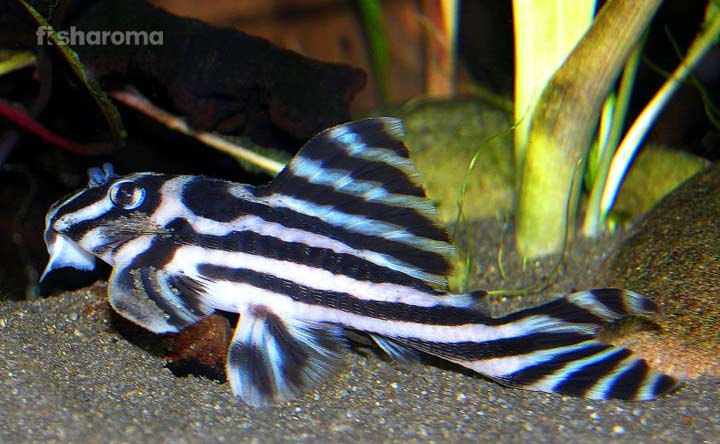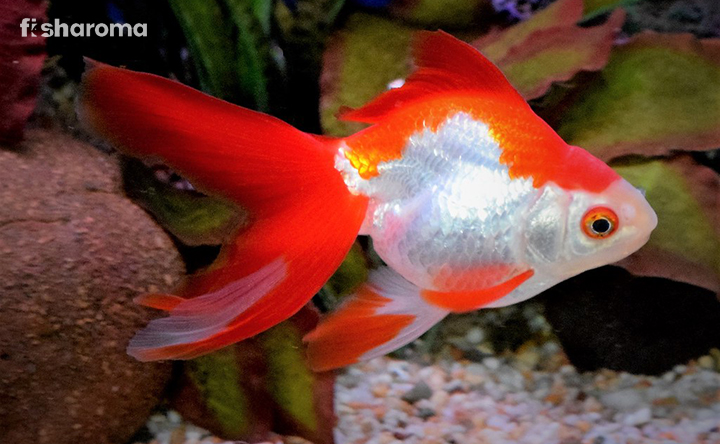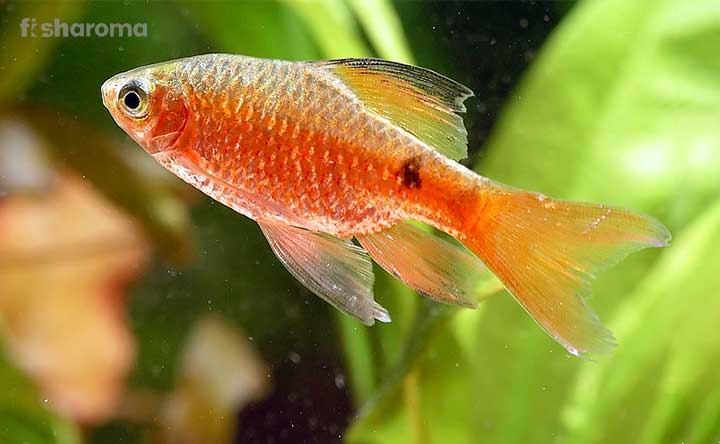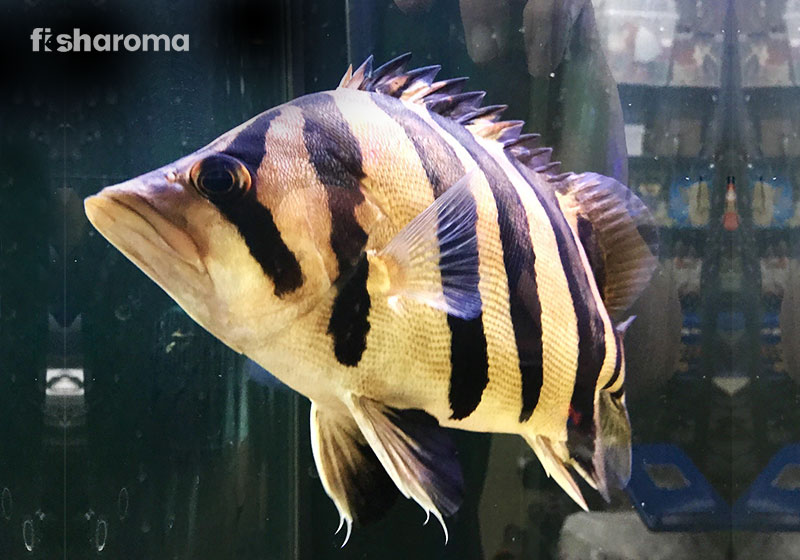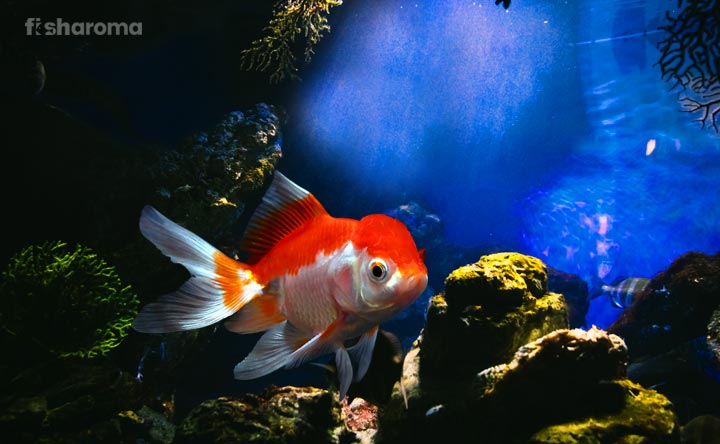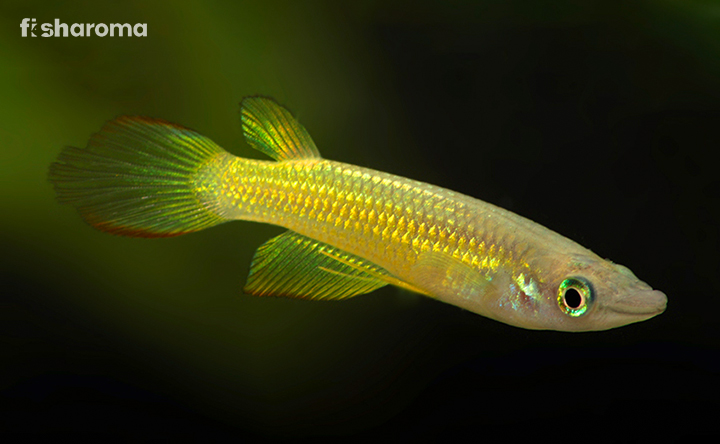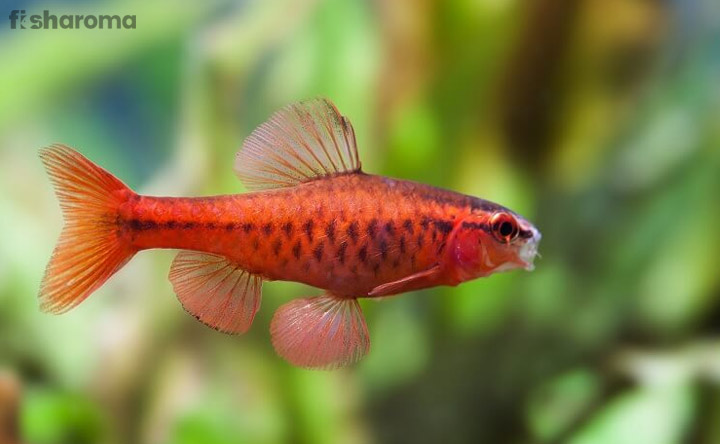Fantail Goldfish: An Overview of Behavior, Diet, and Care Guide

- Origin and Habitat of Fantail Goldfish
- Appearance of Fantail Goldfish
- Behaviour of Fantail Goldfish
- Lifespan of Fantail Goldfish
- Diet of Fantail Goldfish
- Tank Requirements of Fantail Goldfish
- Water Type for Fantail Goldfish
- Compatibility of Fantail Goldfish
- Breeding of Fantail Goldfish
- Disease and Treatment of Fantail Goldfish
- Summary
Considered as famous, and rightly so, the Fantail Goldfish is the commonest choice for all fish lovers. This enduring fish is easy to find, and it doesn’t take up much of your time for maintenance. So, perfect for beginners, even experienced fish enthusiasts find this variation of common Goldfish extremely convenient. They are generally inexpensive, but based on their colour variations, their price might vary.
So, if you have already made up your mind about petting the fish, you might get this article helpful. In this guide, we will elaborately discuss their housing requirements, diet, and possible diseases.
Key Specifications of Fantail Goldfish
Let us throw some light on the basic features of the fish so that we can understand what kind of care they actually need.
| Scientific Name | Carassius auratus auratus |
| Origin | China |
| Lifespan | 10-15 years |
| Colours | Orange, red, yellow, white, calico, silver, black, and bronze |
| Temperament | Peace Loving |
| Size | 6-8 inches (15.24 -20.32 cm) |
| Diet | Omnivore |
| Family | Cyprinidae |
| Compatibility | Social |
| Care Level | Easy |
| Reproduction | Egg-layers |
| Maintenance Requirements | Low |
| Tank Size | 20-30 gallons |
Overview
One of the finest of the lot, Fantail Goldfish comes along with the baggage of attractive appearance and appeal. Exclusively bred for its beauty, it belongs to the freshwater fish group like many of its Goldfish family members. The size, beauty, and temperament all contribute to their popularity.
Whenever you are bringing new Fantail Goldfishes for your existing ones ( they do well with friends), make sure to quarantine them first for a few days. Oxygen and nitrate balance is also important for them to grow.
Origin and Habitat of Fantail Goldfish
Fantail Goldfish is essentially bred in captivity, hence, not found in the wild. It is one of the varieties of common Goldfish that itself is a product of long term breeding and domestication in China thousands of years ago. Later on, China traded them in the other parts of Asia like Japan, as well as in Europe, and America. Many breeders have been breeding them since then with many colour variations.
As far as their habitat is concerned, they thrive well in cold and slow-moving waters. So, that is an important thing to keep in mind while setting up an aquarium.
Appearance of Fantail Goldfish
The vivacious fishes are bright, conspicuous, and absolutely a treat for your eyes, brightening up any aquarium with their colourful bodies. Justifying their name, they possess beautiful caudal fins or tails, appearing like a triangle-shaped fan when looked at from above. Their anal fins are also dual along with a single and arched dorsal fin that meets with the tail.
Fantail Goldfishes have button eyes with minimum to rare exceptions. As far as sexual dimorphism is concerned, male and female fishes usually share the same physical features and it is crucial to differentiate. But, during the breeding season, their appearances change as the male fishes start to exhibit white patches or spots around their head and gills. The female ones become a little bigger than their male counterparts.
Overall Fantail Goldfishes have a chubby appearance. Their scale is either speckled or they exhibit a metallic texture.
Size
The average-sized fish mostly grows between 6-8 inches. Although some Fantail Goldfishes found in the pond (for breeding purposes) are known to be a little larger than their usual size.
Colour
The egg-shaped fish showcases bright shades of orange, white, red, and yellow. Some breeders have also produced Fantail Goldfishes with rare shades like calico (in combination with blue), bronze, and even black.
Behaviour of Fantail Goldfish
The apparently docile temperament and fuss-free nature of these fishes are reasons why they are a popular pet choice. Social and not usually aggressive, they love to swim through their habitat (aquarium) with their beautiful fins. Fantail Goldfishes are a perfect choice for keeping with other calm fish species in a tank. Often, if kept as a group, they swim and explore their surroundings together. If the fish doesn’t get enough space, then it can get aggressive with other teammates, but that is a rare occasion as sufficient space is a basic condition for all of them.
Lifespan of Fantail Goldfish
The hardy Fantail Goldfish generally lives for 10 to 15 years. In some cases, some specimens have even lived for around 20 years. All they need is some basic maintenance and care like cleanliness and hygiene.
Diet of Fantail Goldfish
The omnivorous species consumes pretty much everything that you would serve. They are happy eaters and can binge on food throughout the day, even when they are full. But as a balanced Goldfish diet is a key to a healthy fish, you need to ensure their protein intake by supplying daphnia, brine shrimp, tubifex worms, mosquito larvae, and bloodworms either in live or a frozen form.
Include plant-based items or green vegetables like zucchini, lettuce, and well-blanched peas as that would take care of the fibre requirement of the body. Give formulated pellets and flake food but in much less quantity than the others, as they do not have much nutrient value.
Live food can increase the risk of parasitic or bacterial infection, so it is better to be extra careful. If you are feeding live food often, then make sure to deworm your pet, preferably after every two months.
Tank Requirements of Fantail Goldfish
Keeping the fish is hassle-free in the truest sense, just give it proper food and clean space, and they will be happy. But as an owner, you must always try to recreate your pet’s natural habitat inside your aquarium so that it feels at home. With these fishes, as they do not have any other existence in the wild, you should always come up with a cosy standard Goldfish aquarium that would make the fish feel secure.
Tank Size
It is advisable to provide a rectangular-shaped aquarium for the fish as it loves to swim extensively. Though they are not big, but that doesn’t take away their requirement of a wide aquarium. The height of the aquarium might not be an issue as they mostly swim horizontally, and not upwards, except for a few times regarding when you are dropping foods for them.
As far as the size is concerned, the aquarium with a water capacity of 20 to 30 gallons is a better option. Usually, a baby fish is good in 10 gallons of water, but they are prone to grow fast so it is better to set up an aquarium with a minimum of 20 gallons of water. For housing a few fish together you need to add water accordingly.
You should never set up a bowl or nano tank for the fish as these are not at all spacious.
Tank Lid
A standard tank lid as per the aquarium size is required, protecting the place from outside dirt and dust.
Substrate
Fantail Goldfishes are inquisitive in nature and love digging the basement of the aquarium. So, a sandy surface sans some sharp objects will cater for their nibbling needs. Fine and smooth gravel along with granule like surfaces is the best for such fishes. At the same time, avoid any chunky or large pieces of stones or rock as they can hurt themselves, resulting in unnecessary cuts, bleeding, choking, and other injuries.
Filter
Strong filtration is of utmost importance because these fishes produce a lot of waste. So, to manage the excessive bioload, filtration is the only way other than changing the water frequently. You might even need something better than the standard filter, especially if your aquarium has multiple Goldfish. Sponge filters, wet/dry filters, and Canister filters are some of the viable choices. Regardless of their type, ( internal or external filters) make sure the filter is not too chunky, taking up a lot of space and creating any hindrance for the Goldfish.
Ornaments
Decorating the aquarium for your Goldfish is easy. Place some hiding spots or shelters along with some well-rooted plants. Keep some driftwood as that would be the perfect spot for their hideout. Please ensure that embellishment should not cover the tank, minimizing the swimming zone for your fish.
Presence of Flora
Goldfishes might want to take a bite from everything they come across, so the plants need to be anchored well. Floating or silk plants are not recommended. You can try hornwort, java fern, and anubias.
For decorating purpose, choose such plants that Fantail Goldfishes usually aren’t interested in chewing or exploring.
Lighting
External lighting in moderation is required as aquariums don’t get proper and natural sunlight from outside. A normal day to night transition helps Goldfishes regulate their bodily needs, so whenever you are arranging for lights inside your aquarium, do not give bright ones. The fishes are comfortable with mild and soothing orange, green, and blue lights inside the aquarium. To prevent them from directly staring at the lights and harming their eyes, place the lights from the top instead of both sides.
Cleaning Method
Aquariums housing Fantail Goldfishes tend to get dirty frequently, mostly due to the leftover food and their waste. As mentioned earlier, the water quantity needs to be plenty to dilute the waste and yet remain healthy for the fish. But that is just one way to avoid daily cleaning of the aquarium. If the fish tank gets too much sunlight that is conducive to algae production then you have to clean it even more. The aquarium should be cleaned from the outside as well.
If the fish is kept inside a bowl (ideally you should never) and that too without a filter, then clean the bowl twice a week.
Water Type of Fantail Goldfish
Maintaining a suitable water condition ensures a long and healthy life for a Fantail Goldfish.
Temperature
The fish usually stays comfortable within a range of 16 to 26 Degree Celsius. Although their temperature tolerance is quite good, still you can maintain these ranges for their well-being. Due to this particular quality, they are often kept inside a pond. But during the heavy winter season, the owner needs to arrange for a heater close to the pond.
pH Level
The pH level of the water should be from 6 to 8.
Hardness
The water hardness for this fish should preferably be within a range of 4-20 dKH.
Replacement Procedure
As a standard rule, for all Goldfish aquariums, you need to change the water once biweekly if not weekly.
Compatibility of Fantail Goldfish
Fantail Goldfishes are social and love to mingle with other fish. If kept alone, they are prone to get upset and stressed. You should choose fishes with similar temperaments. Also, other aquatic species like crabs, shrimps, and snails can be teamed up with them as they don’t go against each other.
Suitable Tank Mates
- Ryukin Goldfish
- Black Moor Goldfish
- Celestial Eye Goldfish
- Lionhead Goldfish
- Oranda Goldfish
- Pearlscale Goldfish
- Ranchu Goldfish
- Rosy Barbs
- Hog Nose Catfish
- Giant Danio
- Chinese Blue Bitterling
- Northern Redbelly Dace
Unsuitable Tank Mates
These fishes have a pleasant temperament so pairing them up with bigger or other aggressive species might cause them to get bullied. Also, they are not as competitive as some bigger fish species are, in terms of food scavenging, so they won’t be able to fight back either. Also, never consider smaller fishes as the Goldfish can easily consume them. African Dwarf Frog is a strict no-no. Suckermouth catfish and similar fishes are best avoided as they can expose the Goldfish’ slime coat by eating them off. This can lead to parasitic and other sorts of infection for the Fantail Goldfish.
Breeding of Fantail Goldfish
The spawning is encouraged during the spring with warm temperatures, but if the water is not naturally warm then provide a heater. The warming should have a gradual process as you can do it by increasing a maximum of -16 Degree Celsius in one day. However, it can never go beyond 23°Degree Celsius. Usually, the fish spawn when the temperatures are around 20 Degree Celsius or close to 23 Degree Celsius. Sudden or rapid temperature change might be bad for the breeding pair. The pairs should be well fed with protein-enriched food like fleshy bloodworms, brine shrimp, and daphnia. Feed them thrice a day during the phase.
With all these suitable conditions, an interested male fish starts pursuing the females by circling around them followed by their vibration against each other. Spawning happens and as a result, you could see around 10,000 eggs on the surface of the spawning net of the breeding tank. However, Goldfishes can easily consume their own eggs, so it is better to separate the eggs right after they are laid.
The eggs are completely hatched within four to six days releasing small young fishes, alternatively known as fry. They take a few days before they start wandering off, during this phase, they feed off the egg sacs. To nurture them, you can give foods like soft brine shrimp, crushed dried food, or any powdered items and infusoria.
Prior to breeding, keep the breeding pair in different places from each other as it will invoke their mating interest.
Diseases and Treatment of Fantail Goldfish
The otherwise healthy fishes are susceptible to common digestive problems from overeating, stomach bloating, and so on. Constipation is another ailment causing swim bladder disease for which the fish can’t swim like its usual self.
For constipation you can give very little or no amount of food to your pet for one or two days, this will give their stomach time to improve its ability. Always offer frozen food after the starving period. At any point in time, if you think your pet is not behaving normally, then consult a doctor accordingly.
Fin rotting is another common thing affecting the fish. It is treated with antibiotics. If required, quarantine is also suggested.
Fantail Goldfishes can easily be a victim of ich that needs proper usage of Methylene blue, non-iodized salt, or any commercially available ich-curing medicine.
Parasitic infections from fish lice, anchor worms, flukes are also common. Take immediate measures like consulting a professional.
Keep an eye for other telltale signs like lethargy, unusual postures like turning upside down. Regularly cleaning the tank, checking the filter, and other basic hygiene measures will keep such ailments at bay.
Summary
The beautiful fish does not demand attention all the time. So, if you are a fish lover but can’t go for a far-stretched commitment, you can buy this fish as they are happy with minimum care. Just some basic conditions need to be maintained. From its tank size to its diet, everything is pretty basic and there is no rocket science involved. Practically double returns on minimum investment. The result? A group of fine-looking beauties adorning the aquarium! Their good long lifespan always ensures a better companionship for you.
Interesting Facts
- The earliest sighting of the Fantail Goldfish dates back to the time of Ming Dynasty in China, in the year 1400.
- This fish’s close cousin Ryukin Goldfish is native to Japan now, and has quite exquisite features.
- In China, it is alternatively called “Lettered Fish” because of its similarity with the Chinese letter “W”.
- Some of the fishes are prone to develop telescope eyes, that too when they are around six months. They are likely to get renamed based on that feature.
Care Guides of Other Similar Pets
If you are fascinated with the beautiful Fantail Goldfish, you might want to take a look around other Goldfish species. They might be excellent neighbours to your pet fish.
- Black Moor Goldfish – The big-eyed black beauties are peace-loving and quiet creatures. Just like a Fantail Goldfish, they are also ideal for beginners.
- Comet Goldfish – The bright orange pet is an active swimmer, showcasing their flowy fins and conspicuous appearance. Get a basic idea from the article to know how to care for them.
- Shubunkin Goldfish – The spotted fish comes in three beautiful variations, known as London Shubunkins, American Shubunkins, and Bristol Shubunkins.

